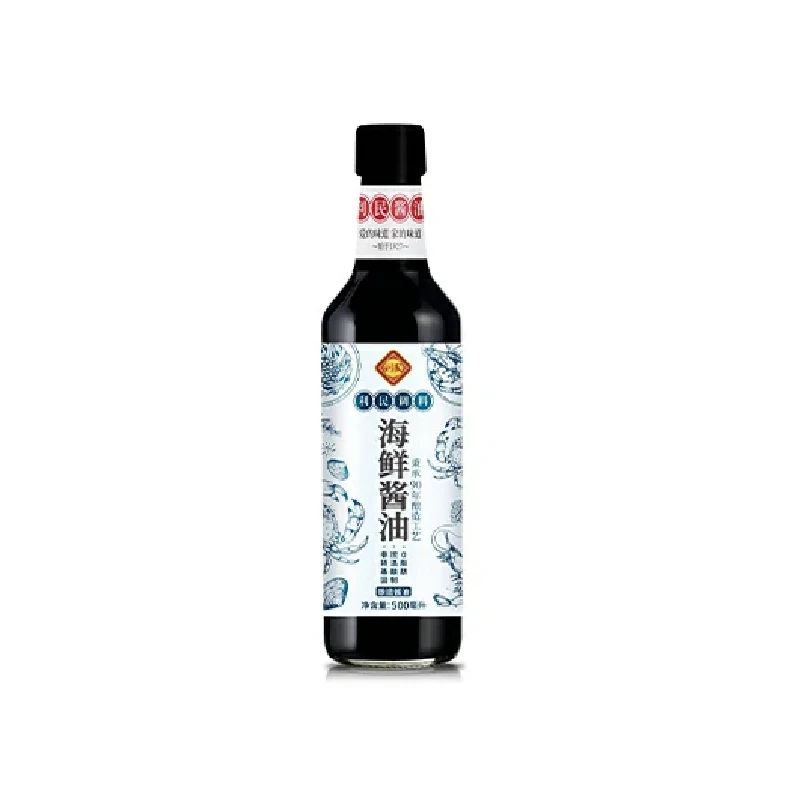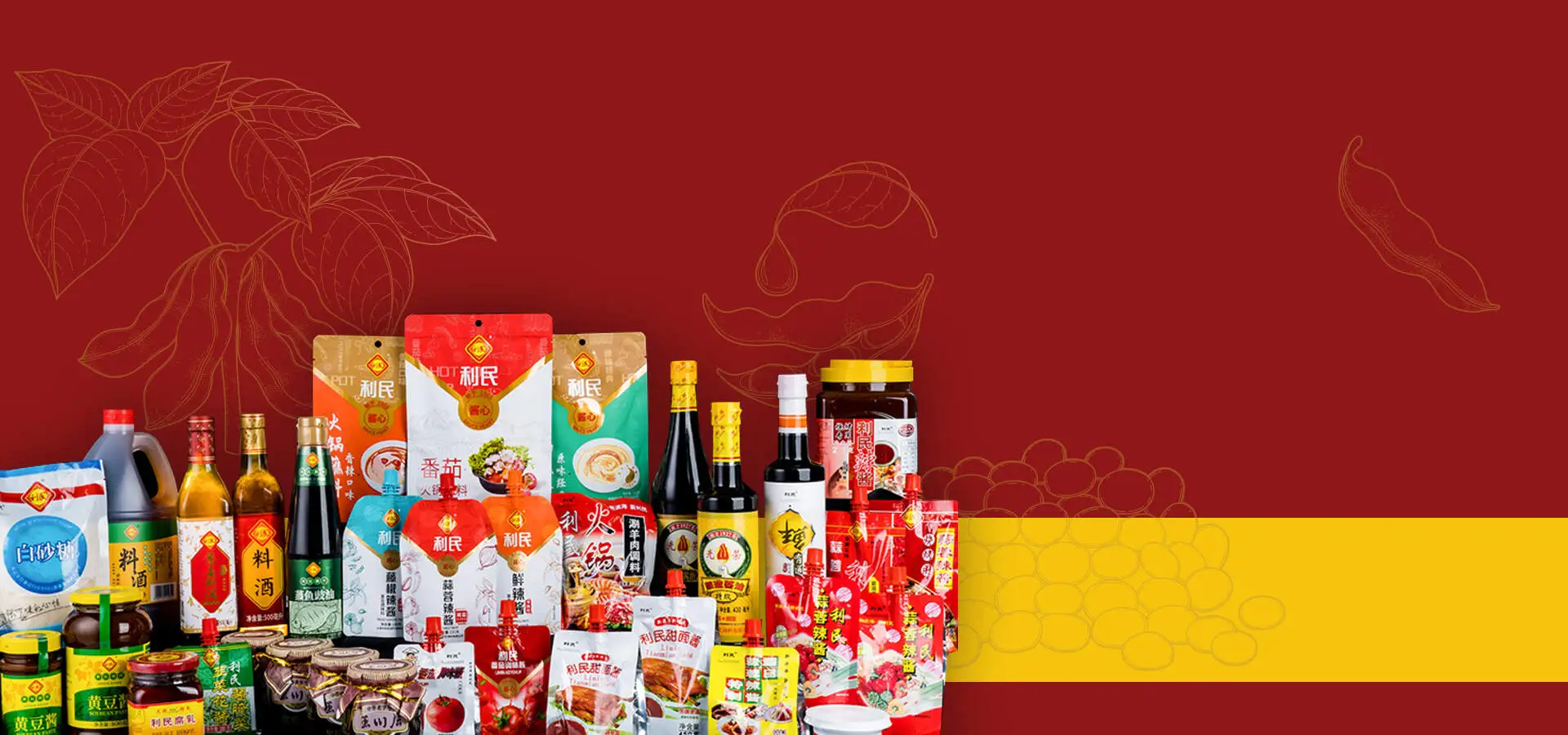Tra la convergenza globale delle cucine, i condimenti trasmettono non solo il sapore ma anche la cultura. Negli ultimi anni, salsa di soia ai frutti di mare, Un condimento innovativo che combina l'aroma di salsa di soia e frutti di mare, ha rapidamente guadagnato popolarità in Nord America, Europa, E anche il Medio Oriente, sollevare una domanda chiave:
Può sostituire la salsa di pesce o la salsa di soia tradizionale nella cottura quotidiana?
Questo articolo approfondirà la sostituibilità di salsa di soia ai frutti di mare Basato su gusti regionali e stili di cottura, Attingendo alla nostra esperienza come produttore globale del condimento per rispondere a questa domanda.

IO. Dal punto di vista degli ingredienti: IL “compatibile” Natura della salsa di soia a base di pesce
Salsa di soia per frutti di mare è realizzato con soia di alta qualità, grano, e sale marino, miscelati con estratti di pesce come i gamberi, capesante, e ostriche, e integrato con esaltatori di sapore naturale come i kelp e i funghi shiitake, Creare una miscela unica di pesce chiaro e note di salsa di soia.
Meno pesce della salsa di pesce, Ma più rinfrescante.
Leggermente meno salato della salsa di soia tradizionale, È più adatto alle moderne diete controllate dal sale.
Facilmente incorporato nella cucina internazionale senza alterare la struttura del sapore originale del piatto.
Le proprietà delicate e umami della salsa di soia a base di pesce lo rendono un'alternativa più user-friendly alle salse in molti paesi.
Ii. Analisi della compatibilità del sapore dei mercati globali tipici
| Regione/paese | Stili di cucina principale | Combinazioni di salsa di soia di pesce consigliate: |
| Stati Uniti/Regno Unito | Stufati, griglie, stufati di pesce, carne di manzo cotta lenta, eccetera. | Può essere usato in piatti come arrosto in pentola con salsa di soia, aggiungendo umami senza sopraffare il sapore. |
| Francia | Specializzato in salse complesse, in particolare bisques di pesce e salse di crema. | Può essere usato in bouillabaisse e salse cremose di pesce, Sostituzione di brodo di pesce o salsa di pesce. |
| Germania | Preferisce fumo, sottaceto, e sapori leggermente salati. | Usalo in pesce cotto a lento e salsa salata, come i piatti freddi di aringhe. |
| Italia | Le acciughe vengono spesso aggiunte alle pasta di pesce e salse di pesce secco. | Può essere usato come una parziale sostituzione della pasta di acciughe in piatti come Spaghetti Alle Vongole e Squid in umido. |
| Russia | Gli stufati di pesce chiari, immergenti di yogurt, e pesce piccolo marinato. | Può essere aggiunto al brodo di pesce yusha o alla salsa di panna acida per un ricco sapore di pesce. |
| Medio Oriente (Arabia saudita/Emirati Arabi Uniti, eccetera.) | Piace usare il limone, spezie, e olio d'oliva con pesce/gamberi. | Adatto come salsa di immersione per gamberi grigliati, Hammour alla griglia, e pesce al forno; può essere miscelato con tahini per creare una salsa di immersione complessa. |
| Israele / Libano | Pesce alla griglia, piatti a base di erbe, e salse leggere. | Può essere usato con succo di limone o olio d'oliva in condimenti per insalata o salse di pesce, Sostituzione della pasta di acciughe. |
I consumatori mediorientali preferiscono freschi, Spazi naturali e non piacciono l'odore eccessivamente di pesce di salsa di pesce. Perciò, salsa hoisin, come un lieve “Mestricatore del sapore marittimo,” è l'ideale per l'uso quotidiano, Soprattutto se abbinato allo yogurt, pasta di spezie, e olio d'oliva.
IiIO. La salsa di Hoisin può essere un sostituto completo?
Non può essere una sostituzione completa, ma può essere un'elegante alternativa o anche un aggiornamento nella maggior parte dei piatti asiatici non sud-est.
Piatti di pesce (come i gamberi, granchio, e filetti di pesce): Migliora il naturale, Sapore fresco del mare.
Salse (come pasta di pesce e zuppa di crema di pesce): Ricco e complesso senza schiacciare il sapore principale.
Salse immergenti: Crea salse creative con olio d'oliva, aglio tritato, erbe, pasta di sesamo, yogurt, e altro.
❌ piatti del sud -est asiatico, come ali di pollo a salsa di pesce e insalata di papaia verde: La salsa di pesce è insostituibile, Offrendo un più intenso, Sapore di pesce.
IV. Considerazioni sulla salute: Adatto alle tendenze dietetiche contemporanee
Senza grassi e molto poveri di calorie
Nessun additivo (I prodotti limin non contengono esaltatori di sapore chimico)
Adatto a quelli con una bassa sensibilità al pesce rispetto alla salsa di pesce.
È disponibile una versione a basso contenuto di sodio, Adattarsi alle restrizioni dietetiche in Medio Oriente, Gli Stati Uniti, ed Europa, dove l'assunzione di sodio è più limitata.
V. Limin seofeod sono salsa: Il condimento ideale per una dieta globale.
Come produttore di condimento professionale, La salsa di soia di pesce limin è stata esportata a finire 50 Paesi, Compreso il Medio Oriente, America del Nord, Tema, e Russia, ed è ampiamente usato nelle cucine domestiche, catene di ristoranti, e l'industria alimentare. Offriamo:
- Ingredienti rintracciabili: Semi di soia non OGM, Estratti di pesce naturali, nessun additivo
- 210-Fermentazione naturale del giorno: Preserva l'aroma e i nutrienti, Nessuna salsa di soia chimica fatta rapida
- Sapori multipli: Originale, A basso contenuto di sodio, e sapore ricco per soddisfare le diverse esigenze del mercato
- Packaging diversificato: 100G - 25kg, Disponibile in vetro, ANIMALE DOMESTICO, e tamburi
- Etichettatura multi-lingua: Personalizzabile in arabo, francese, russo, Inglese, tedesco, e italiano
Se desideri campioni, citazioni, o ordini personalizzati per salsa di soia a base di pesce limin, Per favore contattaci tramite e -mail, E risponderemo prontamente.
Vi. Conclusione: Salsa di soia ai frutti di mare: Un ponte tra cultura e gusto
Lattina di soia a base di pesce sostituire la salsa di pesce o la salsa tradizionale di soia? La risposta è: Sta diventando un'opzione aggiornata su tabelle globali.
Per i consumatori mediorientali, Rappresenta un pulito, naturale, e sapore profumato, una nuova tendenza di stagionale che si adatta meglio ai gusti locali. Per chef europei e americani, È un'arma segreta in cucina per elevare il sapore.
Limin non vede l'ora di diventare il tuo partner a lungo termine nel settore dei condimenti globali, Esplorare più possibilità per le prelibatezze globali insieme.

